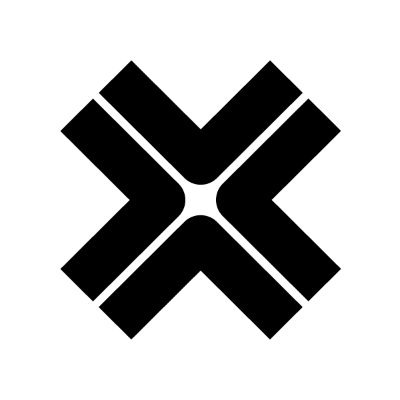Deep Dive into ZetaChain: Seamless Blockchain Connectivity and Interaction
Original Title: 《Understanding ZetaChain: A Comprehensive Overview》
Authors: Ryan Schulenburg, Stephen Basile, Messari
Compiled by: Elvin, ChainCatcher
Key Points
- ZetaChain is a Layer-1 blockchain that provides chain-agnostic interoperability through its omnichain contract products. It allows applications built on ZetaChain to connect to any other application or blockchain.
- ZetaChain utilizes the Cosmos SDK and Tendermint consensus mechanism, enabling developers to build customized, scalable, and interoperable blockchains.
- The network also features an execution layer compatible with the Ethereum Virtual Machine (EVM), called zEVM. Developers can choose to connect omnichain contracts that link different blockchains or use cross-chain messaging (CCM) to transfer data and value messages across blockchains.
- ZetaChain's omnichain applications introduce far-reaching chain abstraction capabilities. Recent initiatives (such as Sushi's native Bitcoin support) highlight the untapped market for BTC in DeFi.
- ZETA is ZetaChain's native token, which will be used to pay gas fees, invoke smart contracts, and secure the network through staking. Once launched, ZETA will allow holders to stake their tokens for rewards.
Background
ZetaChain was launched on December 15, 2021, by an anonymous project team with experience at Coinbase and Basic Attention Token (BAT). Several former Coinbase employees also serve as advisors to the project, including the company's original head of HR, Nathalie McGrath, and Juan Suarez, who served as an internal advisor at Coinbase for a decade. On March 9, 2022, the team released ZetaChain's whitepaper and DevNet and completed its first seed round of funding, the amount of which is undisclosed. Investors in this round included Dan Romero, Sam Rosenblum, John Yi, JD Kanani, and HwiSang Kim. ZetaChain completed its second round of funding in August 2023, raising $27 million from participants such as Blockchain.com, Human Capital, Vy Capital, Sky9 Capital, Jane Street Capital, VistaLabs, CMT Digital, Foundation Capital, Lingfeng Capital, and GSR.
ZetaChain's testnet was launched in August 2022 and quickly gained significant user participation, reaching 150,000 users in the first month after launch. By March 2023, this number had risen to 1 million users, a milestone that coincided with the introduction of validator incentives. ZetaChain continues to operate in the testnet phase, and as of December 19, 2023, has not announced an official launch date for its mainnet.
Overview

ZetaChain is a Layer-1 blockchain that enables chain-agnostic interoperability. The network has an average block time of about five seconds and finality without the need for confirmation or transaction reorganization. Applications built on ZetaChain will be able to connect to any other applications or blockchains, providing a single access point to Web3 for new and existing crypto users. This is achieved by leveraging omnichain smart contracts that can read from and write to any other blockchain, even those that do not use smart contracts themselves. Developers can also use ZetaChain's Connector to send data and value messages to any chain through simple function calls.
Technology and Architecture
EVM Layer
The ZetaChain network utilizes an Ethereum Virtual Machine (EVM) compatible execution layer called zEVM. This layer supports EVM functionalities such as smart contract creation, interaction, and composition. It also allows external chains to call contracts built on zEVM. zEVM contracts can also create outbound transactions on blockchains connected to ZetaChain. All developers building on ZetaChain will create zEVM contracts, which can be standard Solidity contracts. However, to maximize the network's capabilities, zEVM contracts must adhere to specific requirements set forth by omnichain contracts or utilize cross-chain messaging.
Omnichain Contracts

Source: ZetaDocs
Omnichain contracts must implement cross-chain call execution and can connect to external chains by being deployed only once on ZetaChain. Connected chains can also transfer digital assets to contract addresses on ZetaChain. Assets transferred to ZetaChain adopt the ZRC-20 token standard. Omnichain contracts allow for the effective implementation of existing protocols popular on Ethereum, such as Uniswap and Aave. They can also integrate with networks that do not support smart contracts (e.g., Bitcoin). The gas fees generated by omnichain contracts are settled in the native gas token of the target chain.
In summary, omnichain contracts on ZetaChain provide a forward-looking approach to cross-chain functionality, with a one-time deployment accessible across all integrated networks. This model leverages a synchronous execution environment, making it immediately compatible with any new chains supported by ZetaChain, avoiding the hassle of redeployment or recoding to accommodate different blockchains. Thus, these contracts serve as a bridge for cross-chain interactions, improving user experience by minimizing cross-chain gas fees.
The primary advantage of omnichain contracts lies in achieving a unified state and execution. In CCM and other similar systems (e.g., LayerZero and Axelar), applications without the described unified state often require complex workarounds. However, omnichain contracts allow for a cohesive single state, ensuring smoother operations for most use cases. By minimizing inbound and destination gas fees and not relying on multiple messages, omnichain contracts become a native and accessible complement to CCM.
Cross-Chain Messaging
An alternative to omnichain contracts is cross-chain messaging (CCM). CCM is used to transfer data and value messages across blockchains with ZetaChain acting as an intermediary. Developers deploy omnichain contracts on ZetaChain, while contracts supporting CCM are deployed on external chains. The contracts then call the ZetaChain connector API, which relays the message to the target chain, where the CCM-supporting contract receives the message. State is stored on a set of CCM-supporting contracts across different chains.
CCM makes sense for applications that only require one-way and asynchronous logic/effects and do not need a unified state or benefit from one. CCM is primarily designed to enhance existing applications on external chains with cross-chain functionality. Gas fees generated by contracts supporting CCM are priced in ZETA tokens and must be sent to the connector contract on the source chain.
ZetaChain also employs a burn/mint mechanism to secure digital assets transferred via contracts supporting CCM. Assets are burned on the source chain and minted on the target chain. Because these methods hold the transferred assets, this mechanism offers greater security than bridging or wrapping.
Consensus Mechanism
ZetaChain is built using the Cosmos Software Development Kit (SDK), an open-source framework for building permissionless public proof-of-stake (PoS) blockchains and permissioned proof-of-authority (PoA) blockchains. The Cosmos SDK helps developers build new blockchains and launch, test, and integrate networks after creation.
The Cosmos SDK provides a modular framework that allows for the customization of new blockchains to meet specific user needs. It also enables the operation of parallel chains to accommodate increasing throughput demands as user needs grow. Since the Cosmos SDK ensures interoperability, it allows for the transfer of digital assets and their value between different blockchains built using the framework. It also supports consensus and decentralized governance through community proposals and voting in the proof-of-stake module. In addition to these features, the SDK includes security measures such as firewalls to protect blockchain applications. Due to its numerous features, the Cosmos SDK has been used to build several prominent applications and blockchains, including BNB Chain, dYdX, Osmosis, and Celestia.

Source: Messari
The Tendermint consensus mechanism is an asynchronous Byzantine Fault Tolerant (BFT) state machine operated by validators. Validators rotate through proposing and voting on transaction blocks. Each height in the blockchain proposes a block, and if the proposed block is not approved by other validators, new validators propose a block for that height. To approve a block, it must complete two phases of voting. These phases are called "pre-vote" and "pre-commit," and a block is finalized when more than two-thirds of the validators' voting weight approves the same block in the same round.
Voting weight is determined by the stake weight of assets priced on each specific blockchain. With ZetaChain, validator operators must stake ZETA tokens. Since ZetaChain is a delegated proof-of-stake blockchain, holders of ZETA tokens who do not operate validators can delegate their ZETA tokens to existing validators. The proportion of tokens controlled by a single validator (both delegated and self-staked) to the total number of tokens controlled by all validators determines the stake weight, which in turn determines the voting weight.
Architecture

Source: ZetaDocs
The architecture of ZetaChain primarily consists of a decentralized network of validators that reach consensus on external states and events and are responsible for updating the external chain state through distributed key signing. Each validator contains a ZetaCore and ZetaClient, which are bundled together and operated by the same operator. ZetaCore generates blocks in the blockchain and maintains a replicated state machine, while ZetaClient observes events on external chains and signs transactions sent to those chains.
Validators in ZetaChain can act as base validators, observers, or threshold signature scheme (TSS) signers.
Base Validators
Base validators are identified by specific consensus keys and are responsible for voting on block proposals through the voting power created by staking ZETA. Base validators need to be always online and can participate in block production. Additionally, running the following two types of validators (observers and TSS signers) also requires running a base validator. In contrast, the overhead of running a base validator is much lower in terms of software and hardware requirements.
Observers
Observers are responsible for reaching consensus on events and states of external chains. Observers monitor transactions, events, and states on these external chains, which are operated by full nodes of the respective external chains.
This type of validator is further divided into sequencer and validator roles. Sequencers observe relevant external behaviors and report information to validators, who then validate and vote on ZetaChain to reach a simple majority consensus on external behaviors. To make this process effective, a large number of validators are needed; however, only one sequencer is required to report to the validators.
Threshold Signers (TSS Signers)
TSS signers on ZetaChain hold partial ECDSA/EdDSA keys. The threshold signature scheme (TSS) is a digital signature verification method used in multiparty computation (MPC) cryptography. In MPC, a private key is created from "key shares," each held by a separate party or node. If the set threshold of key shares rather than all shares is effective, TSS allows the use of the private key. For example, if nine parties hold key shares and the set threshold is five, the private key can be used as long as five of the nine (referred to as "t" in "n") key share holders provide their shares.
The keys used for authentication interactions with external chains are stored throughout ZetaChain and distributed to multiple signers according to the aforementioned TSS method. ZetaChain uses the tokens staked by validators as collateral against malicious validators to ensure that TSS signers do not sign messages on behalf of ZetaChain on external chains.
Architectural Challenges
Modular system architectures carry inherent risks. These systems may introduce complexities, security challenges, and composability dilemmas, while also exacerbating developer complexity. ZetaChain's omnichain approach seems to address many of these issues, but the fundamental problems deeply rooted in the multichain world may limit demand for ZetaChain and its solutions.
Similarly, ZetaChain may face similar dangers that bridges have repeatedly encountered over the years. A keen analysis of the risks associated with bridges and interoperability will help protect the platform as it stakes its products on the future of interconnected blockchains.
While ZetaChain's PoS mechanism provides a robust security model, it carries the risk of creating a network that overly relies on a small subset of validators. In other words, ZetaChain's circular selection system may be a balancing act, even if its effectiveness has not been fully assessed. The relatively low Nakamoto coefficient overall indicates that ZetaChain is not the only company struggling to guide a reliable active validator set.
ZETA Token
The native token of ZetaChain is ZETA, which will launch alongside the ZetaChain mainnet. As of the time of writing, the launch date has not been announced. Once ZETA and the mainnet are live, the token will primarily be used to pay gas fees, invoke smart contracts, and secure the network through staking.
Validators and token holders will be able to stake ZETA and earn rewards. ZETA will also become the primary value transfer on ZetaChain, allowing transfers between connected blockchains using a one-way peg mechanism. In this mechanism, the number of ZETA tokens transferred will be burned on the source chain and minted on the target chain. Staking parameters have not yet been specified, but the project has listed hardware requirements for running validators. No information has been released regarding the total supply of ZETA or specific allocations. The project team claims that ZETA will be one of the first multichain tokens issued across multiple chains and layers.
Ecosystem
In today's multichain world, users increasingly require seamless interactions across various networks. Multichain users may find themselves attracted to the omnichain approach advocated by ZetaChain, rather than meeting the demands of each bridge, chain, wallet, etc. This paradigm shift reduces transaction friction and enhances security while providing developers the freedom to deploy applications on the most suitable chains.
The emerging field of omnichain applications on ZetaChain embodies this potential by introducing chain abstraction capabilities. Initiatives such as Sushi's native Bitcoin (BTC) support highlight the untapped market for BTC in DeFi, especially considering the recent discussions surrounding BTC ETFs. Furthermore, facilitating smart contracts through ZetaChain's ZRC-20 standard could stimulate the development of Web3, DeFi, and SocialFi applications. As of October, the ZetaChain ecosystem boasts 150 applications. As illustrated in the infrastructure map below, the ZetaChain ecosystem has expanded its breadth, covering a variety of unique participants across different domains.

Source: ZetaChain
As mentioned earlier, ZetaChain's testnet successfully reached 150,000 users in the first month after its launch in August 2022. In less than a year, this metric grew to 1 million users, a milestone that coincided with the introduction of validator incentives. As of the time of writing, the testnet has conducted over 37.6 million zEVM transactions and 14 million cross-chain transactions across more than 2.5 million unique zEVM addresses.
Competitive Landscape
As ZetaChain carves out its niche in the blockchain interoperability space, it must contend with two forms of competition. First, ZetaChain's relevance may be influenced by the outcome of the battle between monolithic blockchains and modular blockchains. Compared to the Interchain ecosystem, Ethereum has a significant lead in users, developers, and liquidity with its rollup-centric approach. Beyond that, ZetaChain also faces established competition from various players.
Axelar
Axelar is built using the same foundational Cosmos SDK technology as ZetaChain. Axelar is committed to full-stack interoperability, which is a holistic approach that includes not only asset bridging but also permissionless cross-chain smart contract execution and dApp support. The Axelar community has adopted a three-part strategy to expand its connected network, which currently stands at 55. This expansion is driven by economic structure adjustments, deploying the Axelar virtual machine for frictionless connections, and pursuing more streamlined solutions such as lightweight clients. Compared to Axelar's comprehensive but potentially complex system, the unified execution environment provided by ZetaChain allows users to enjoy a more streamlined experience while reducing gas fees and messaging requirements.
LayerZero
Unlike Axelar, LayerZero stands out from ZetaChain due to its infrastructure. It is not a blockchain, providing developers with extensive flexibility in protocol implementation. Nevertheless, LayerZero relies on centralized oracles and relayers, which require a higher level of trust, especially since it operates on a dual-chain entity multi-signature system. Therefore, LayerZero may encounter some complexities due to its CCM-style interoperability, as seen with Axelar and other similar chains. In contrast, ZetaChain may position itself as a potential trust-minimized alternative due to its on-chain operations.
THORChain
THORChain is another direct competitor to ZetaChain, as it is natively integrated into the Cosmos ecosystem and uses a similar toolkit for blockchain development. Like ZetaChain, THORChain is also dedicated to interoperability, enabling asset liquidity between different blockchains; however, it creates a unique niche by focusing specifically on liquidity and security through its unique mechanisms.
THORChain is an automated market maker (AMM)-based protocol, similar to Uniswap, but with differences. All assets in the THORChain system are paired with its native asset RUNE. To this end, THORChain has created a DEX that prevents liquidity from being fragmented across pools and ensures that any asset on THORChain can be exchanged for any other asset. In contrast, ZetaChain can leverage its more decentralized validator mechanism, broader support chains, or less stringent requirements for node operations. Additionally, THORChain is application-specific, while ZetaChain is a general-purpose smart contract platform. This allows ZetaChain users not only to create direct competitors to THORChain but also to build applications and use cases beyond DEX applications.
Conclusion
Overall, ZetaChain aims to provide seamless connectivity and accessibility for Web3 applications. To achieve this, it leverages Layer-1 blockchain infrastructure, Cosmos SDK, and Tendermint consensus. With its omnichain smart contracts and cross-chain messaging capabilities, ZetaChain enables developers to connect and interact with any blockchain, including those that do not support smart contracts.
As a delegated proof-of-stake chain, ZetaChain will achieve further decentralization through its token ZETA. In addition to securing the network, ZETA will also be used to pay gas fees and serve as the primary value transfer mechanism. As progress continues towards the launch of the ZetaChain mainnet, it has the potential to facilitate interoperability and enhance the functionality of the broader blockchain ecosystem.
Despite its potential, ZetaChain's path to success is not without challenges. As of the time of writing, ZetaChain remains a relatively new Layer-1 that has not yet launched its mainnet. Like nearly all blockchains, achieving mainstream adoption is a daunting task, especially when significant existing players are in play.
According to an upcoming roadmap, the ZetaChain team plans to focus on increasing adoption at both user and developer levels. The roadmap emphasizes building more chain integrations, bringing greater interoperability for dapps and different asset types (particularly the ability to support Bitcoin NFTs), and providing SDKs for omnichain dapp developers. At the same time, the team will explore enhancing ZetaChain's security and efficiency by upgrading certain network functionalities.
Ultimately, compared to the focus areas of Axelar, LayerZero, and THORChain, ZetaChain's positioning in the competitive landscape should highlight its unique selling points, such as its architecture, validator mechanism, or transaction efficiency. By doing so, ZetaChain can effectively define its place in the market, leveraging areas that can provide higher value to users.














